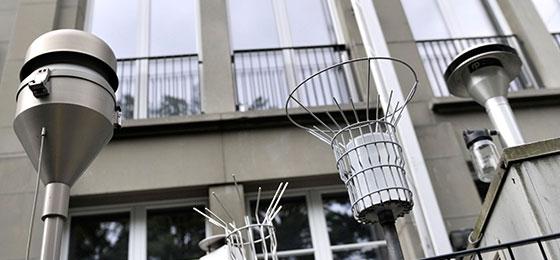Something in the air

Epidemiologists are using increasingly precise means to determine just how much fine dust we inhale. This may help us to find out more about the health risks of these particles. By Angelika Jacobs
(From "Horizons" no. 105, June 2015)There are hundreds of scientific publications describing the health effects of breathing in the fine dust and chemical compounds that arise principally from combustion processes. It seems obvious to everyone today that air pollution contributes to respiratory illness, but in fact such links are difficult to prove.
One major criticism of epidemiological studies on air pollution is that they rely on data from just a few central measuring stations that don’t necessarily reflect the actual exposure of the participants in the study. The concentration of pollutants can vary greatly according to location.
Individual exposure
For some time now, epidemiologists have been focussing particularly on so-called ultrafine particles (UFPs). Their very small size – less than 100 nanometres – means they can enter the bloodstream and quite possibly even advance into the brain. However, the health effects of this fine dust have been little researched until now. UFPs are distributed very unevenly in the air. So when epidemiological studies use data gathered at a central measuring location, there’s no way to be sure just how reliable it is.
This issue has been under investigation by Nino Künzli and Reto Meier of the Swiss Tropical and Public Health Institute (SwissTPH) in Basel. They have compared UFP measurements from central reference stations in 80 residential locations. Their research is part of the Swiss Cohort Study on Air Pollution and Lung and Heart Diseases in Adults (SAPALDIA) headed by Professor Nicole Probst-Hensch. “The measurements can differ by a factor of two and more”, says Meier. UFP concentrations depend on the distance from the emission source, which is primarily road traffic. This is why attention has to be paid to the proximity to roads and to the wind direction when choosing locations for making representative measurements.